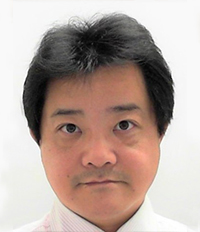Some company executives use corporate pension plans to shift risk from the shareholders to employees. Such a risk-shifting strategy increases R&D expenditures and corporate values for companies with proper corporate governance, but not for those with poor governance.

©︎ Vanz Studio― stock.adobe.com/jp
Some companies offer their employees a corporate pension plan: a benefit that provides income during retirement based on the employee's length of service and salary history. Such companies are referred to as "plan sponsors." In a so-called defined-benefit pension plan, a plan sponsor company commits a specific amount of payment for life to each eligible employee.
Managing defined benefit pension plans invites a shareholder-employee conflict of interest: a company's purpose is to provide long-term value to its shareholders on the one hand, but also to secure its employees' pension benefits on the other hand. These two aspects do not always align. Shingo Goto from the University of Rhode Island and Noriyoshi Yanase from Keio University have recently conducted a thorough investigation into how corporate governance affects pension plan sponsors' conflicting motives. Their recent findings, published in Finance Research Letters1 -based on their earlier paper published in the Journal of Corporate Finance2 -provide insights into the intricate connections between corporate governance, pension plan policies, R&D financing, and shareholder values.
Pension plans provide a way for companies to effectively borrow internally from their employees, which can provide financial flexibility. This kind of internal financing can, for example, be used for investments in risky R&D projects. If a company intentionally leaves its pension funds underfunded for this purpose, this is a form of risk shifting from shareholders to employees. The latter will accept such risk-shifting if it allows the company to resolve future underinvestment problems and to increase expected employee compensation.
From the perspective of risk management (as opposed to risk-shifting), a company should keep its pension plans well-funded to avoid the risk of future cash-flow disruption. If, however, a company chooses to finance immediate investment opportunities by underfunding its pension plans (i.e., risk-shifting), it is unclear whether the company's value increases with the investments. Goto and Yanase propose that the outcome of the risk-shifting strategy depends on good or bad corporate governance.
The researchers put forward three hypotheses. Firstly, they suggest that managers of well-governed companies (i.e., companies with strong investor monitoring) tend to choose high expected rate of return (ERR) assumptions for the pension fund assets to lower cash contributions to the pension plan. These then lead to higher R&D investments. The second hypothesis states that managers of poorly-governed companies (i.e., companies with weak investor monitoring) choose ERRs that are too optimistic, leading to poorer pension funding status. Thirdly, Goto and Yanase hypothesize that higher ERR assumptions lead to higher shareholder values for well-governed, but not for poorly-governed companies. The researchers then tested these hypotheses by means of a dynamic panel regression model, with ERR as the prominent predictor of R&D, pension funding, and shareholder value, checked against a dataset of almost 14,000 firm years of companies listed on the Tokyo Stock Exchange's First Section.
The main conclusion from testing these hypotheses is that the quality of corporate governance significantly affects managerial risk-shifting behavior. Specifically, quoting the researchers, "... managerial risk-shifting improves shareholder values by addressing underinvestment problems without aggravating pension underfunding, [but] risk-shifting by poorly monitored firms results in larger pension underfunding without increasing shareholder values."
Published online 31 January 2024
About the researcher

Noriyoshi Yanase ― Professor
Faculty of Business and Commerce
Noriyoshi Yanase received a bachelor's degree, master's degree,
and Ph.D. in commercial science from Hitotsubashi University
in 1998, 2000, 2003 respectively. He is currently a professor
at the Keio University Faculty of Business and Commerce.
His research interests are in risk management, insurance,
and corporate finance.
Links
Reference
- Goto, S., Yanase, N. Corporate governance and shareholder-employee risk-shifting: Evidence from corporate pension plan sponsors. Finance Res. Lett. 58, Part A, 104279 (2023). | article
- Goto, S., Yanase, N. Pension return assumptions and shareholder-employee risk-shifting. J. Corp. Finance 70, 102047 (2021). | article